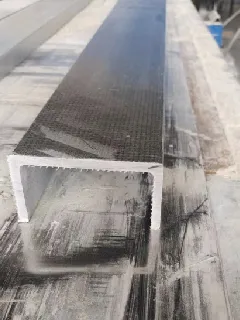loading...
- No. 9, Xingyuan South Street, Dongwaihuan Road, Zaoqiang County, Hengshui, Hebei, China
- admin@zjcomposites.com
- +86 15097380338
- Welcome to visit our website!
fiberglass grating
Understanding Fiberglass Grating A Comprehensive Overview
Fiberglass grating, often referred to as FRP (Fiber Reinforced Plastic) grating, is a versatile and durable material utilized in various industrial, commercial, and residential applications. Its unique properties, such as corrosion resistance, lightweight nature, and high load-bearing capacity, make it an increasingly popular choice for platforms, walkways, and support structures in environments that are typically harsh.
One of the primary advantages of fiberglass grating is its exceptional resistance to chemical corrosion. Unlike steel or aluminum, fiberglass does not corrode when exposed to harsh chemicals, making it ideal for environments such as wastewater treatment plants, chemical processing facilities, and food processing areas. This resistance not only extends the life of the grating but also reduces maintenance costs significantly.
In terms of strength and durability, fiberglass grating is designed to withstand heavy loads while remaining lightweight. The material is made from a combination of fiberglass strands and a resin matrix, which offer a high strength-to-weight ratio. This means that large panels of grating can be handled and installed easily, without compromising stability or safety. Additionally, fiberglass grating often features non-slip surfaces, enhancing safety in environments where wet or slippery conditions are a concern.
Another key characteristic of fiberglass grating is its non-conductive nature
. This property makes it an excellent choice for electrical installations, as it minimizes the risks associated with electrical hazards. Industries such as power generation and telecommunications benefit from this feature, where grounding and safety considerations are paramount.fiberglass grating

The aesthetics of fiberglass grating should not be overlooked either. Available in various colors and styles, it can be integrated into any design scheme. Whether used in a commercial setting or a residential application, fiberglass grating can complement the overall look while providing functional benefits.
Installation of fiberglass grating is also straightforward. It can be easily cut and molded to fit specific applications, and it is lighter than many traditional materials, which reduces the effort required during installation. The panels can be easily secured with standard fastening methods, promoting efficiency in construction and renovation projects.
Economically, while the initial cost of fiberglass grating may be higher than that of some traditional materials, the long-term savings associated with reduced maintenance and replacement make it a cost-effective option. Its longevity and resistance to wear and tear ensure that investment in fiberglass grating pays off over time, particularly in demanding environments.
In conclusion, fiberglass grating represents a remarkable solution for a range of applications, thanks to its unique combination of strength, durability, and resistance to environmental challenges. Whether used in industrial settings, commercial spaces, or residential projects, it offers countless benefits, making it a go-to material for engineers and contractors looking for reliable and efficient flooring solutions. As industries continue to prioritize safety and sustainability, the prominence of fiberglass grating is likely to grow even further in the coming years.
-
Revolutionary Modular Handrail Systems Redefine Safety StandardsNewsMay.15,2025
-
Innovative Water Treatment Technologies for Purer WaterNewsMay.15,2025
-
Innovative Square Water Tank SystemsNewsMay.15,2025
-
Innovative Galvanized Steel Water TanksNewsMay.15,2025
-
Innovative FRP Grating Products Revolutionize Industrial FlooringNewsMay.15,2025
-
Fiberglass Storage Tanks for Reliable Water SolutionsNewsMay.15,2025
-
The Benefits and Uses of Covered Grating SolutionsNewsMay.12,2025
